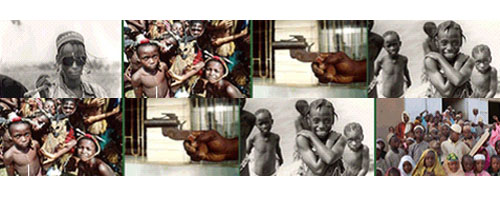10 Myths on Violence in Nigeria”, 11-15th of December, 2017 IFRA Library

From the 11th to 15th of December 2017, IFRA organised a week of Masterclass entitled “10 Myths on Violence in Nigeria”. It took place at the IFRA library, Institute of African studies, University of Ibadan.
11 master and PhD students of the University of Ibadan in various fields of social sciences and humanities were selected to participate. The programme was led by Prof. Marc-Antoine Pérouse de Montclos, political scientist and specialist of Nigeria assisted by Ghislain Benrais, programme developer.
The purpose of the masterclass was to debunk and deconstruct prevailing myths on violence in Nigeria. For so doing, participants were invited to use the Nigeria Watch database. Starting in 2006, the Nigeria Watch project documents deadly violence in Nigeria through a reading of the Nigerian press. It provides figures on violent deaths by coding them accordingly (e.g: road accident, crime, natural disaster…) and can be used to design sophisticated analytical tools like charts and graphics.
Dr. Elodie Apard, IFRA Director, started the first session with an introduction of the topic and the weekly programme. Prof. Pérouse de Montclos then took the floor to expound key rules and issues on combining quantitative and qualitative social science research in Nigeria. Mr. Ismaël Maazaz, IFRA research associate, was the next speaker and presented issues and methods around social science research on press media. Dr. Timothy Adeola Adams, Nigeria Watch project coordinator and Mr. Vitus Nwankwo Ukoji, assistant project coordinator then presented the Nigeria Watch database; they explain the making-process of the database along with the key functionalities and usages.
10 myths were identified and brought to students’ attention by Prof. Pérouse de Montclos. For each myth, Mr. Benrais had produced a graph enabling participants to debunk it. They are the following:
- Myth 1: Nigeria is more and more violent and dangerous.
- Myth 2: Economic recession leads to more violence
- Myth 3: Oil production is a major cause of fatal violence.
- Myth 4: Nigeria is a dangerous place for foreigners.
- Myth 5: Lagos is the most criminal place in Nigeria.
- Myth 6: Abuja is relatively safe.
- Myth 7: There are more armed robberies during Christmas in Nigeria.
- Myth 8: Sharia Law helps fighting crime.
- Myth 9: Religious violence is on the rise.
- Myth 10: Terrorism is the main risk in Nigeria.
- Students then proposed Myth 11: There is more ritual killings during elections in Nigeria. Mr. Benrais was tasked with producing an extra graph on this myth.
Each student selected a myth. His/her main goal of the week was to write a-one page paper on his/her myth that will contain the following three paragraphs: first, a general description of the myth; second, a presentation of the data that contradict the myth, notably resting on the graph provided; third, a finding analysis section that effectively debunks the myth. Over the week, Prof. Pérouse de Montclos met individually with participants to provide feedback on successive drafts.
The Masterclass also had a technical training component. Since many students lack elementary knowledge of useful IT tools like Microsoft Excel, Mr. Ghislain Benrais taught two sessions of introduction to Excel usages, which were particularly well-received by participants.
On Thursday 14th of December, we had the pleasure to host Prof. James Hentz, Political Scientist and Professor at the Virginia Military Institute (USA). He delivered a lecture entitled “The Challenges of analysing armed conflicts in Africa” which was followed by a session of questions and answers.
The Masterclass ended on Friday, 15th of December with a debriefing of the week. In spite of the logistical difficulties related to the ongoing staff strike at the University of Ibadan, most students managed to produce a one-page analysis/debunking of the myth they had selected. The final drafts were meticulously commented simultaneously by Prof. Pérouse de Montclos and Hentz. They are expected to be further edited in 2018 and published as part of a booklet.

Prof. Pérouse de Montclos teaching while Mr. Benrais (behind) is working on the charts

A moment of relaxation after the Masterclass with participants along with Dr. Elodie Apard, Prof. Hentz and Pérouse de Montclos

A chart made by Ghislain Benrais using the Nigeria Watch database that relates years to number of violent deaths in Nigeria. It was used by participants to debunk the myth according to which “Nigeria is more and more violent and dangerous”. The chart shows that after peaking up in 2014-2015, the number of violent deaths decreased in the following years.

Social Media
Mailing List